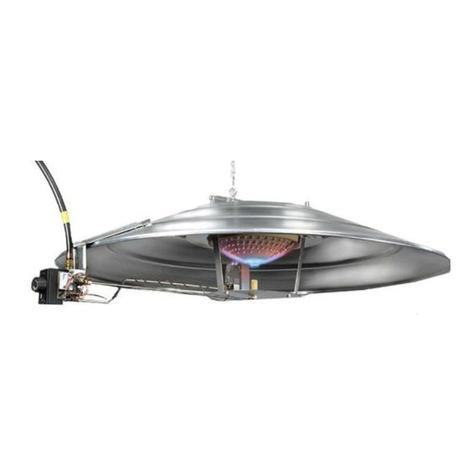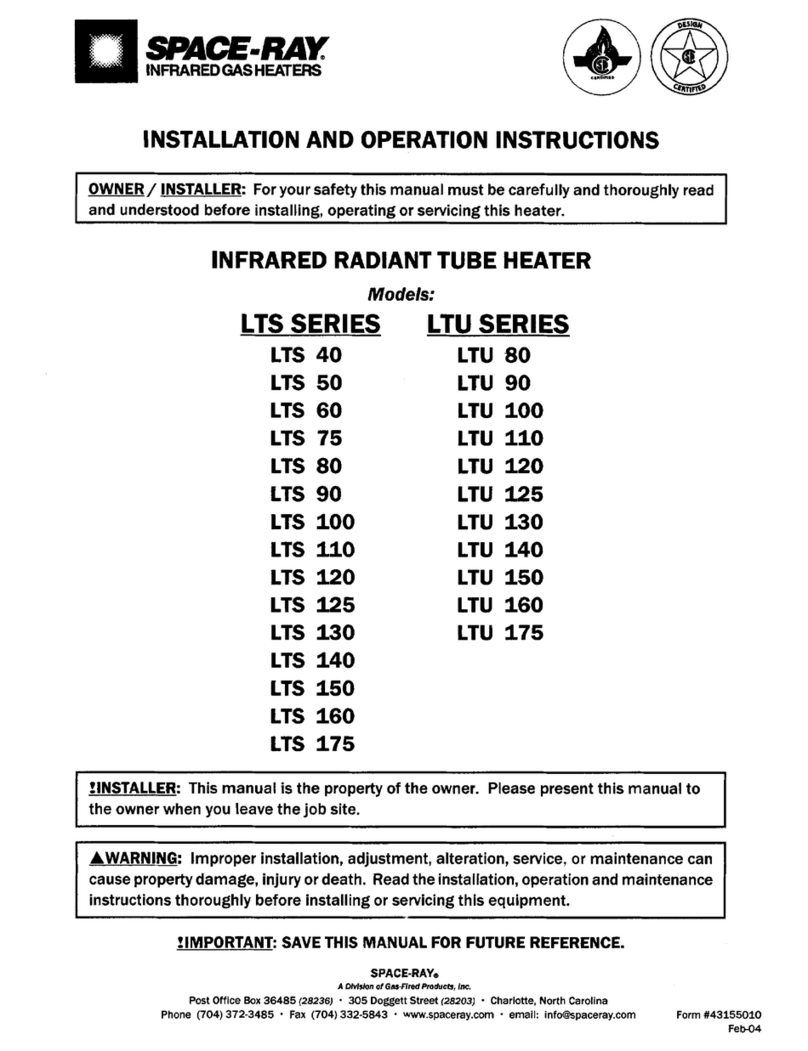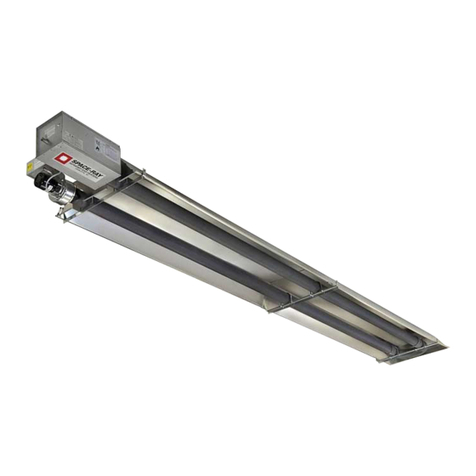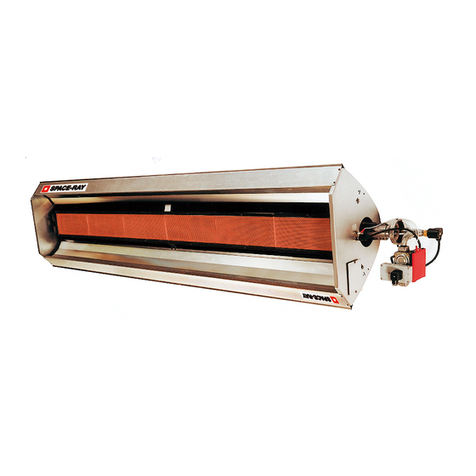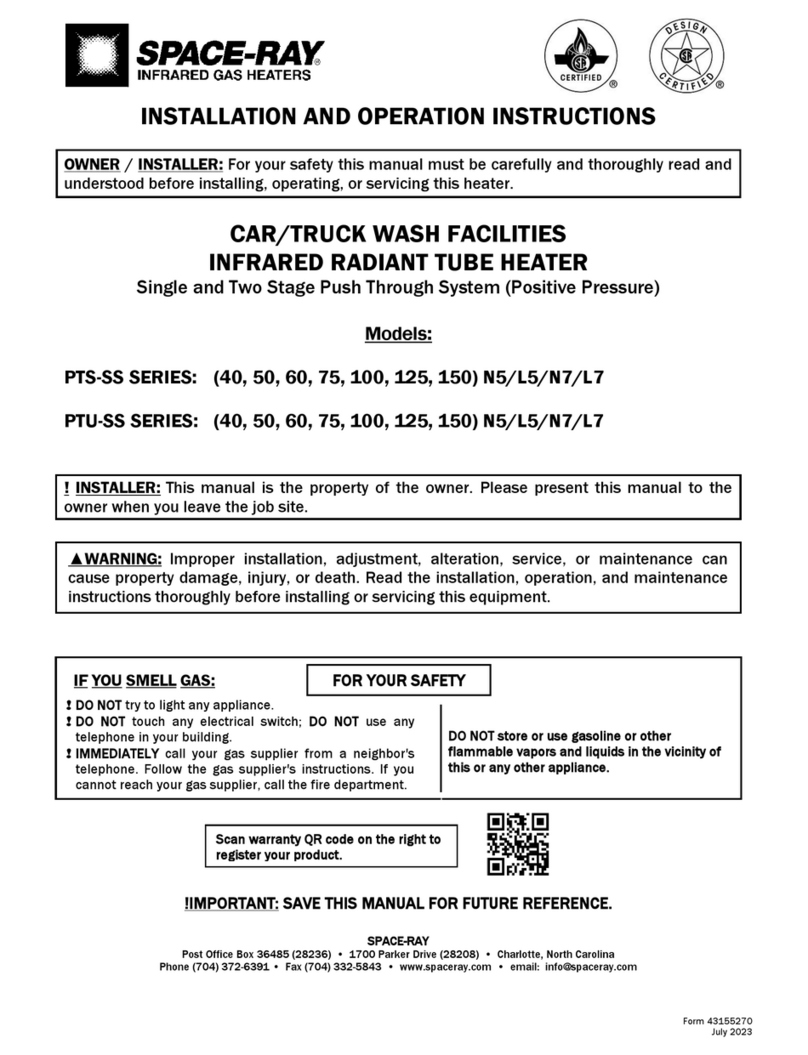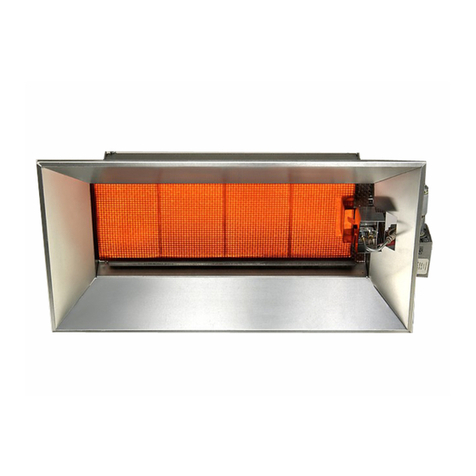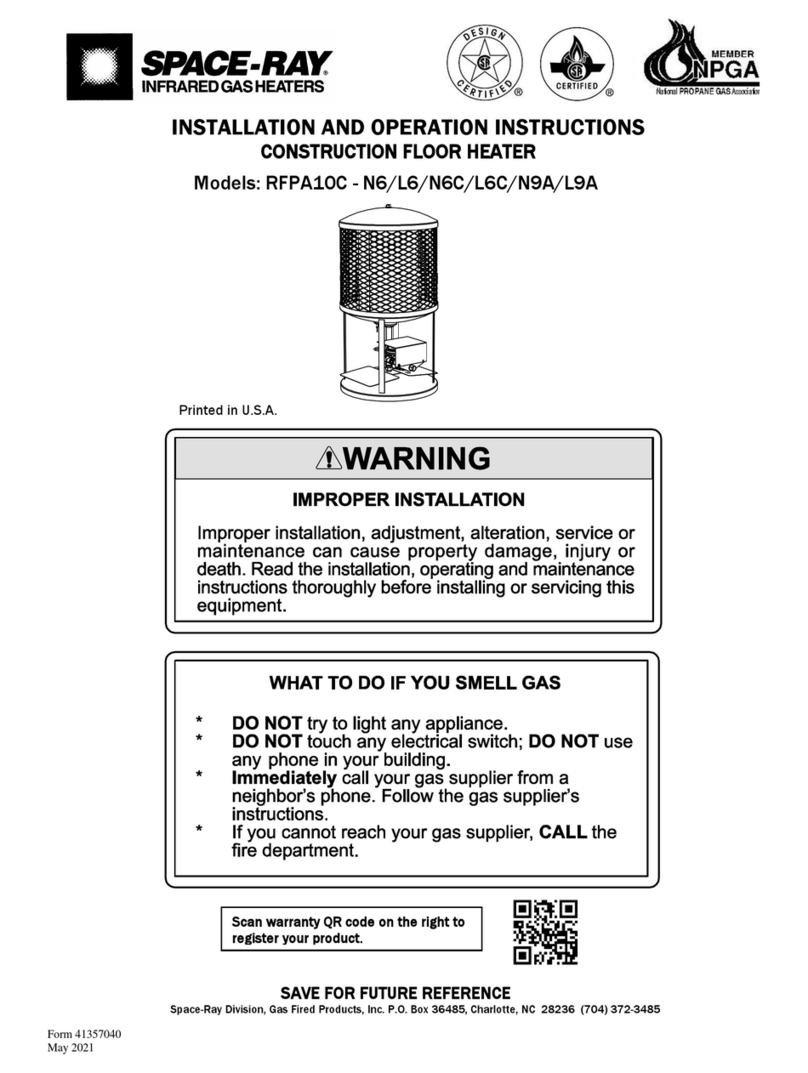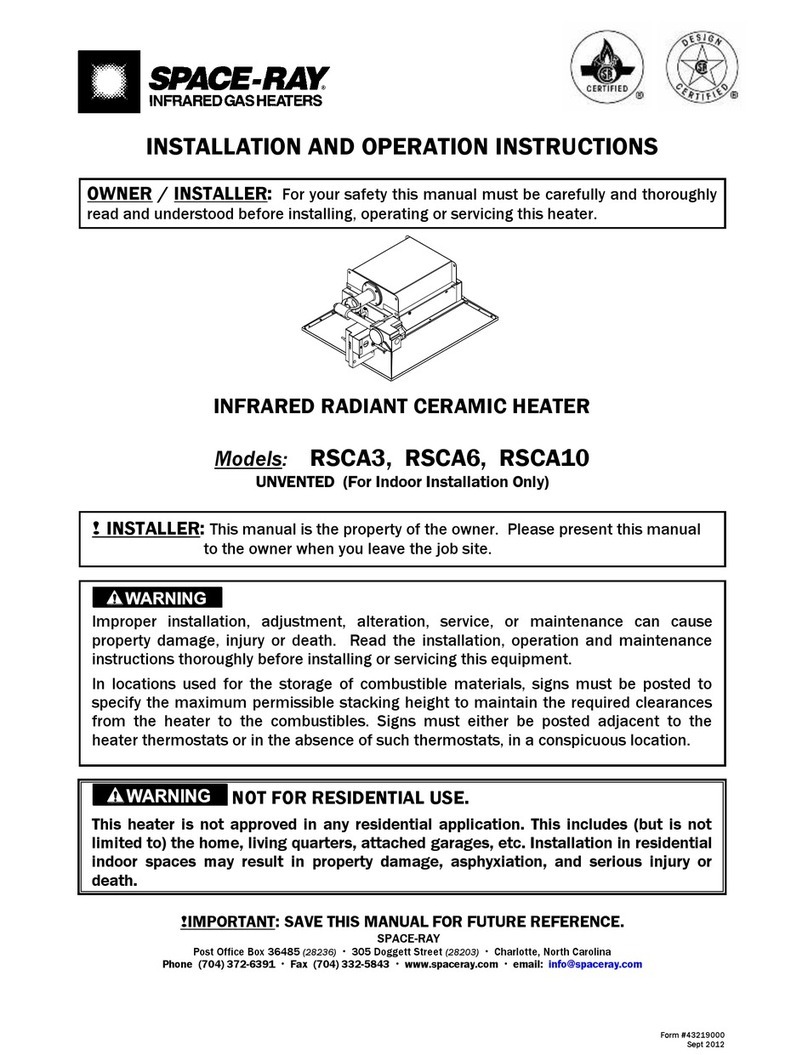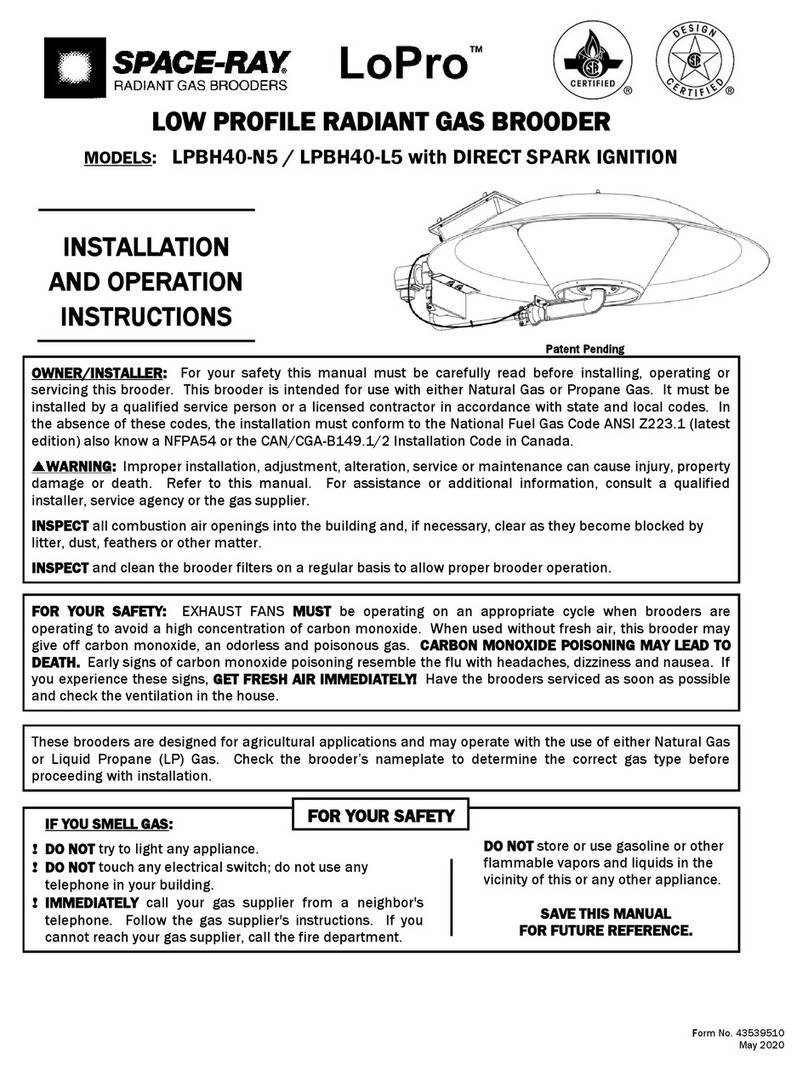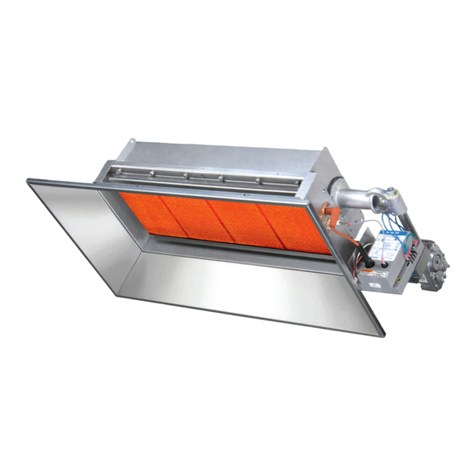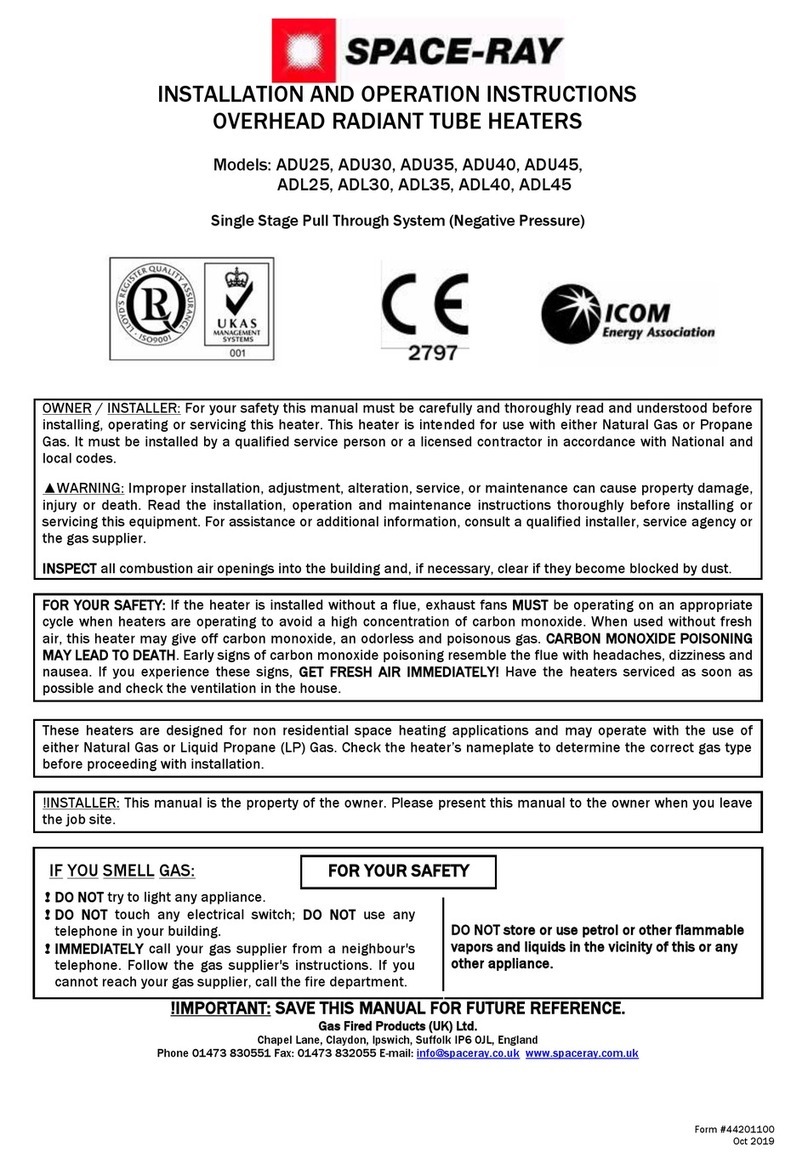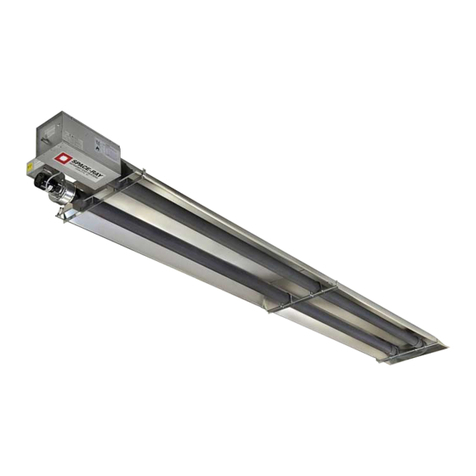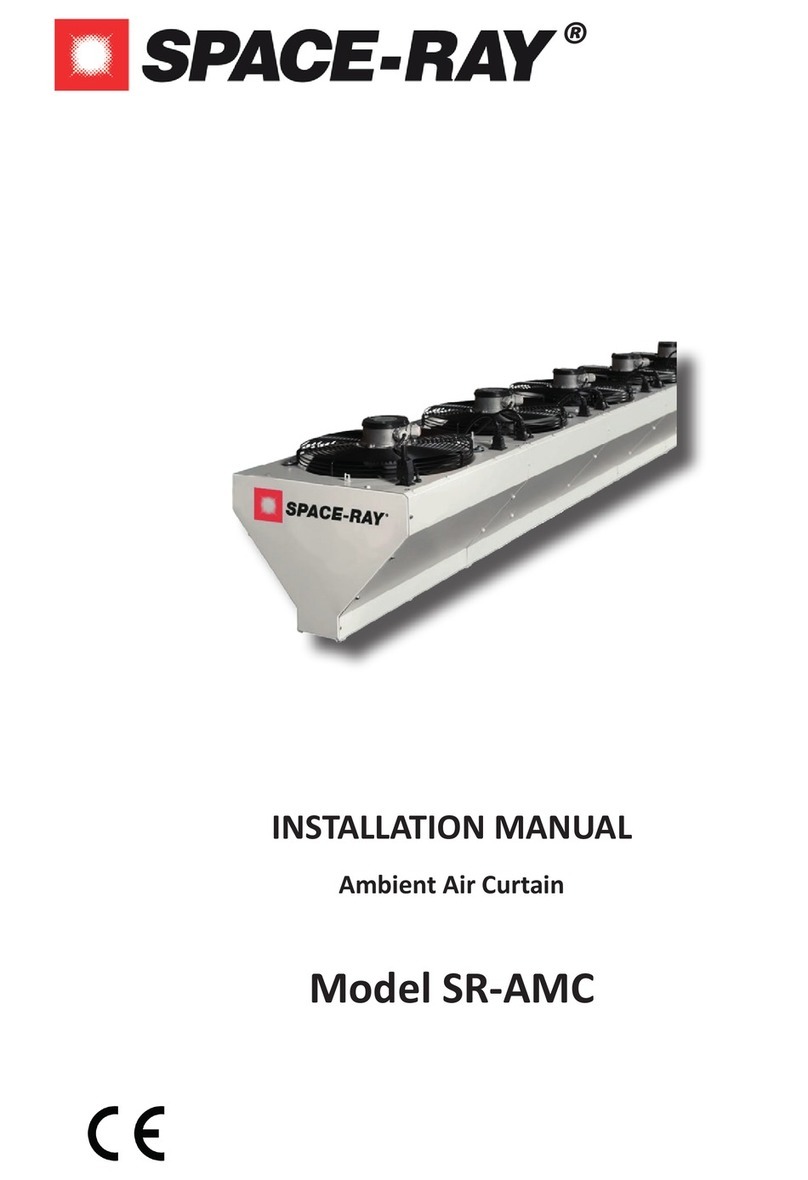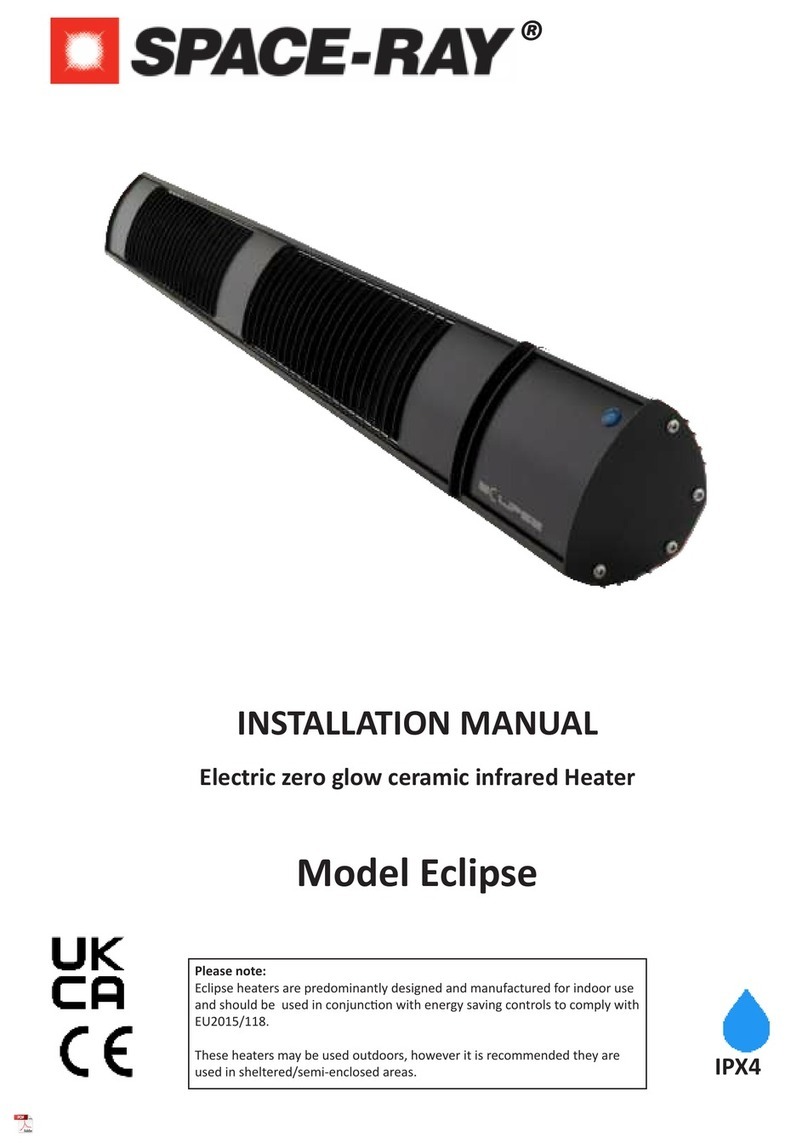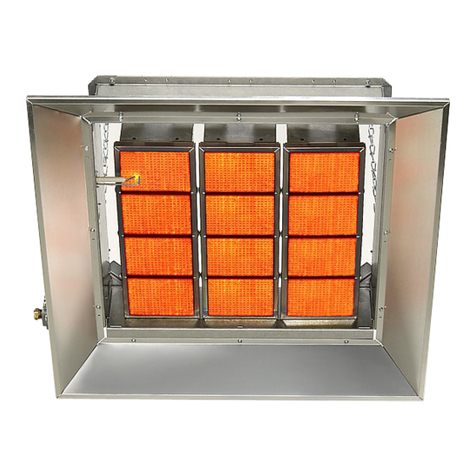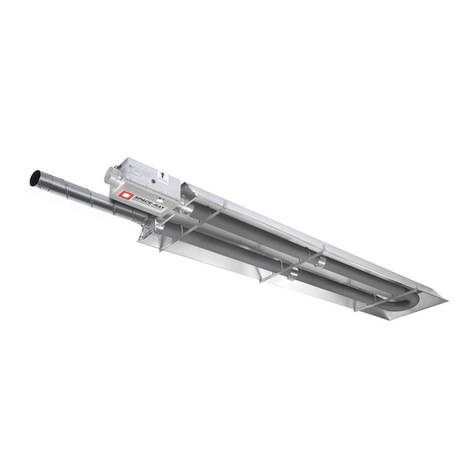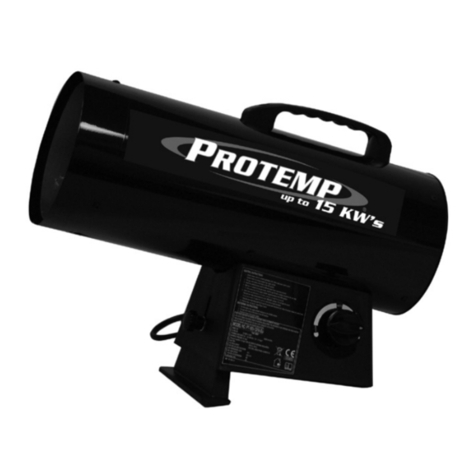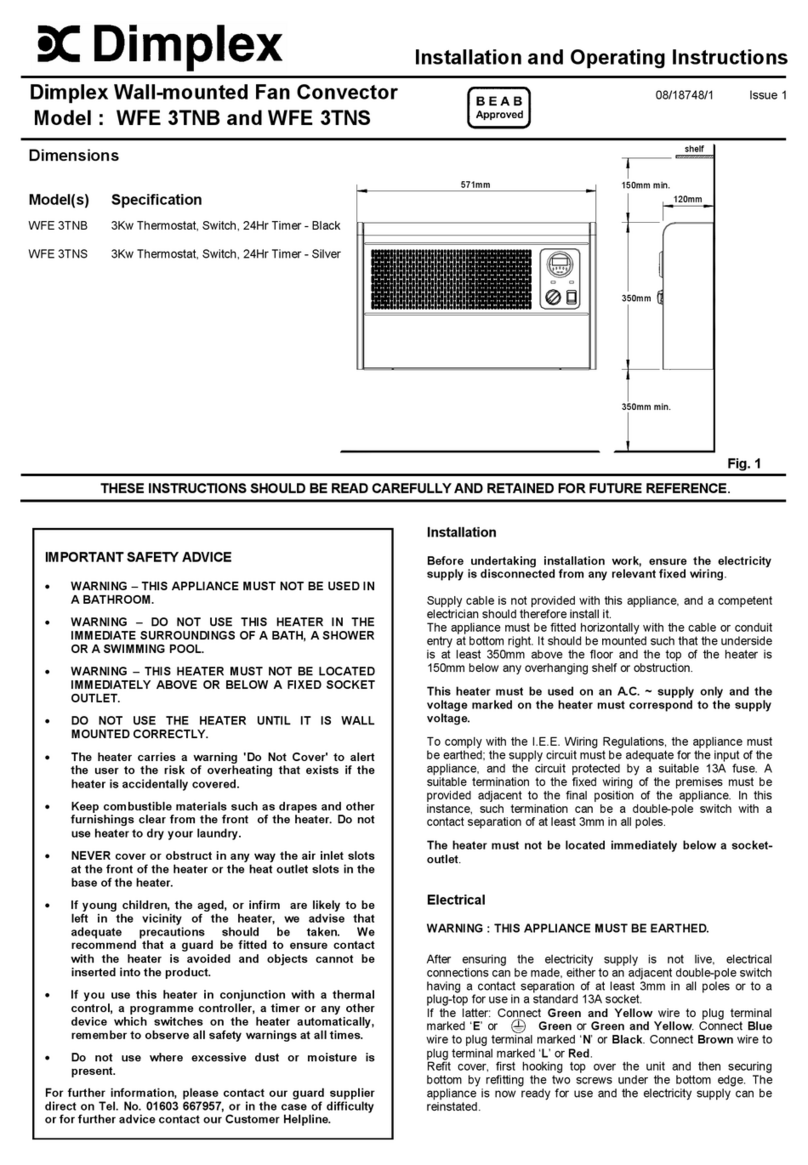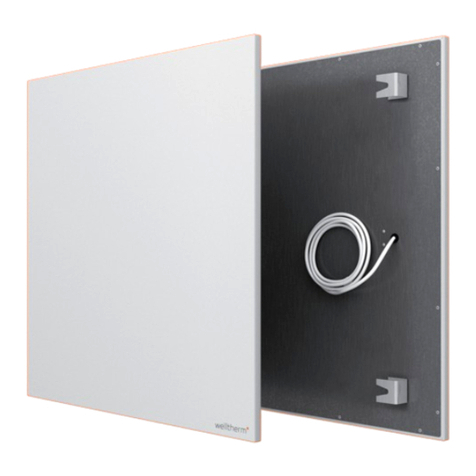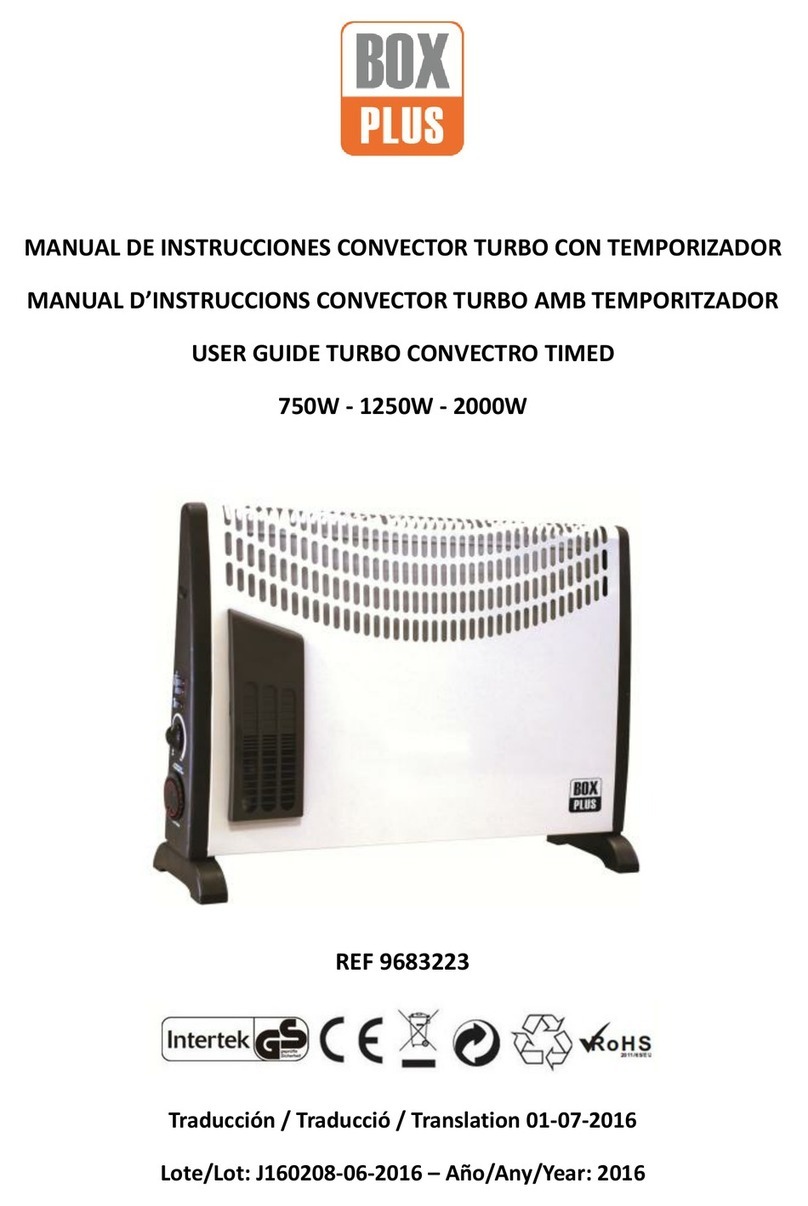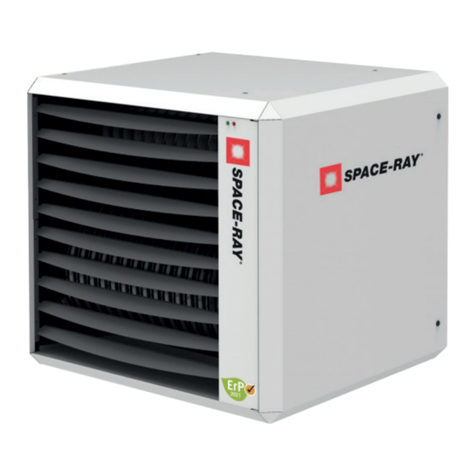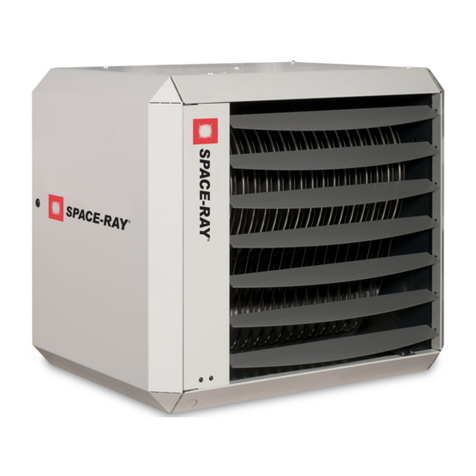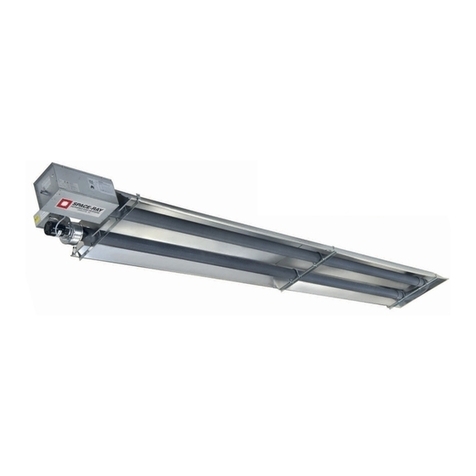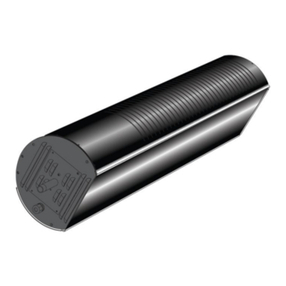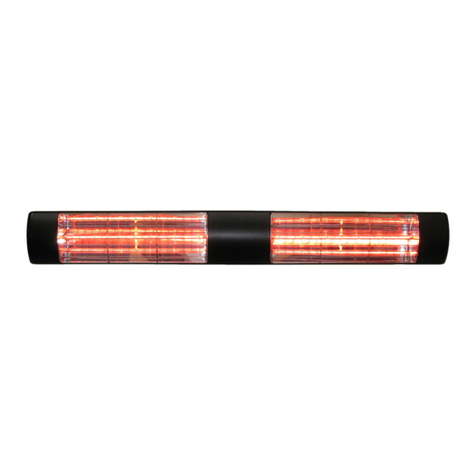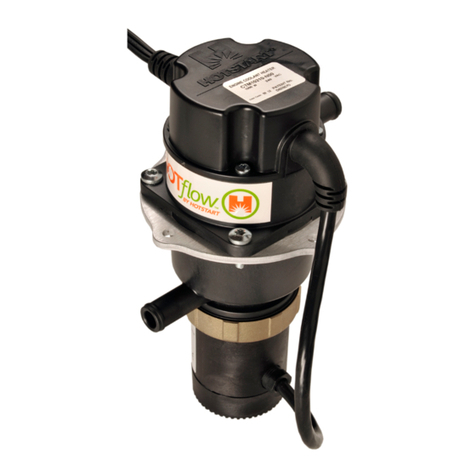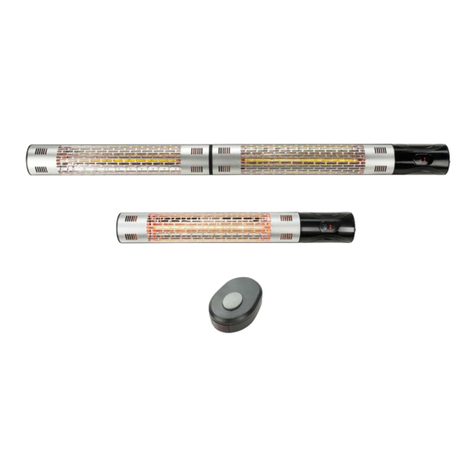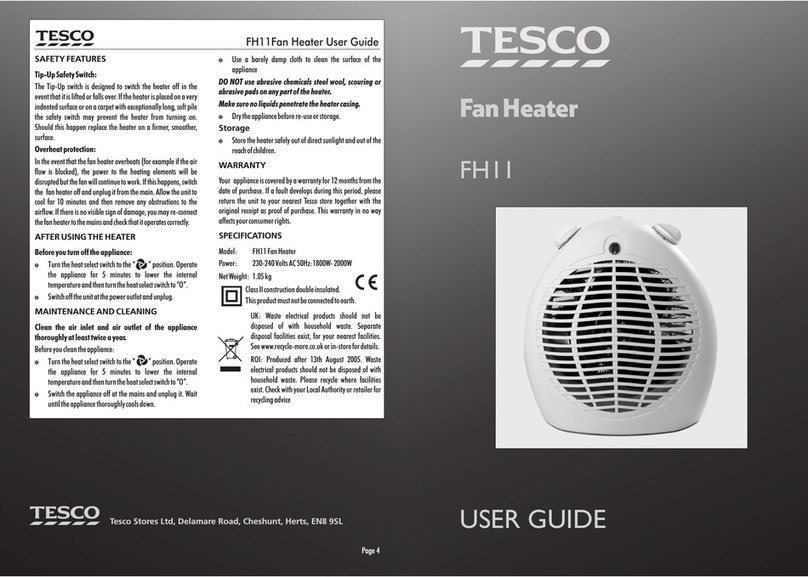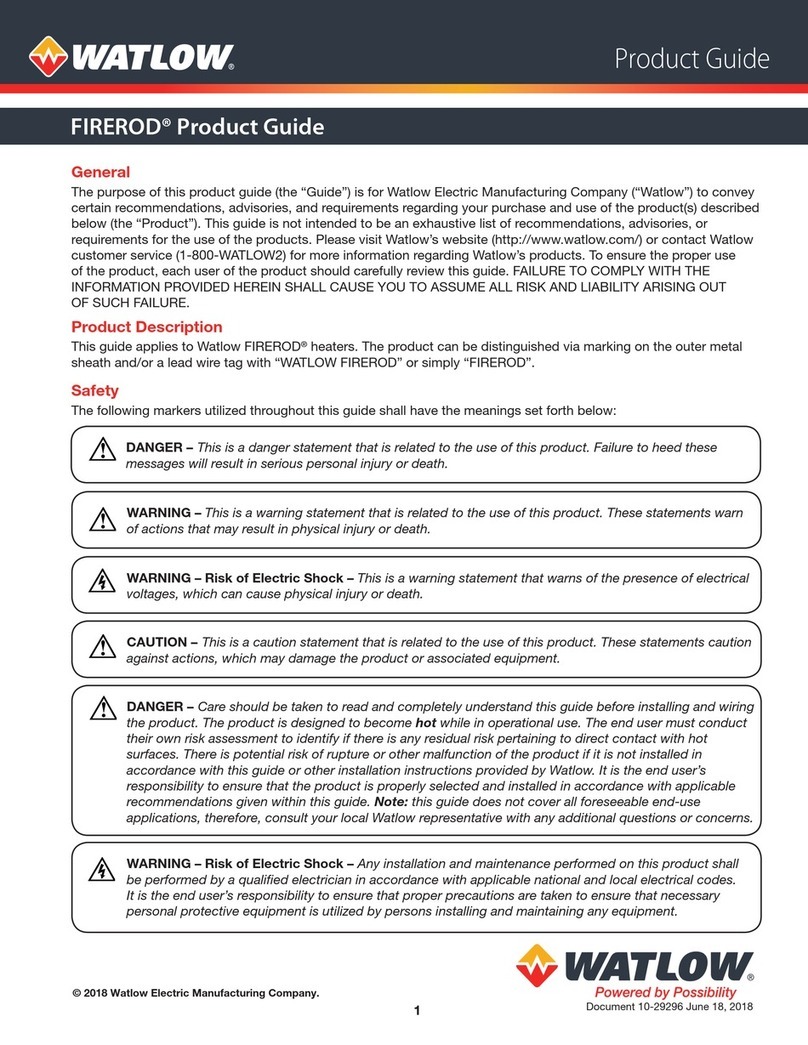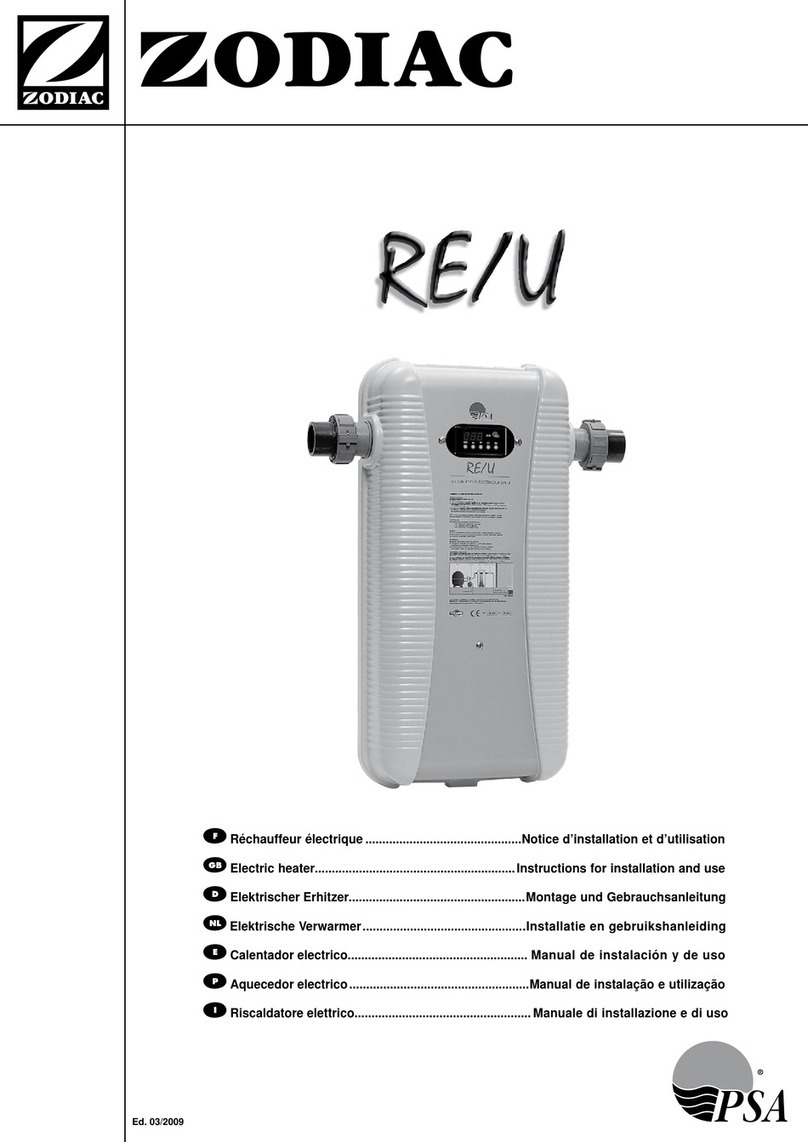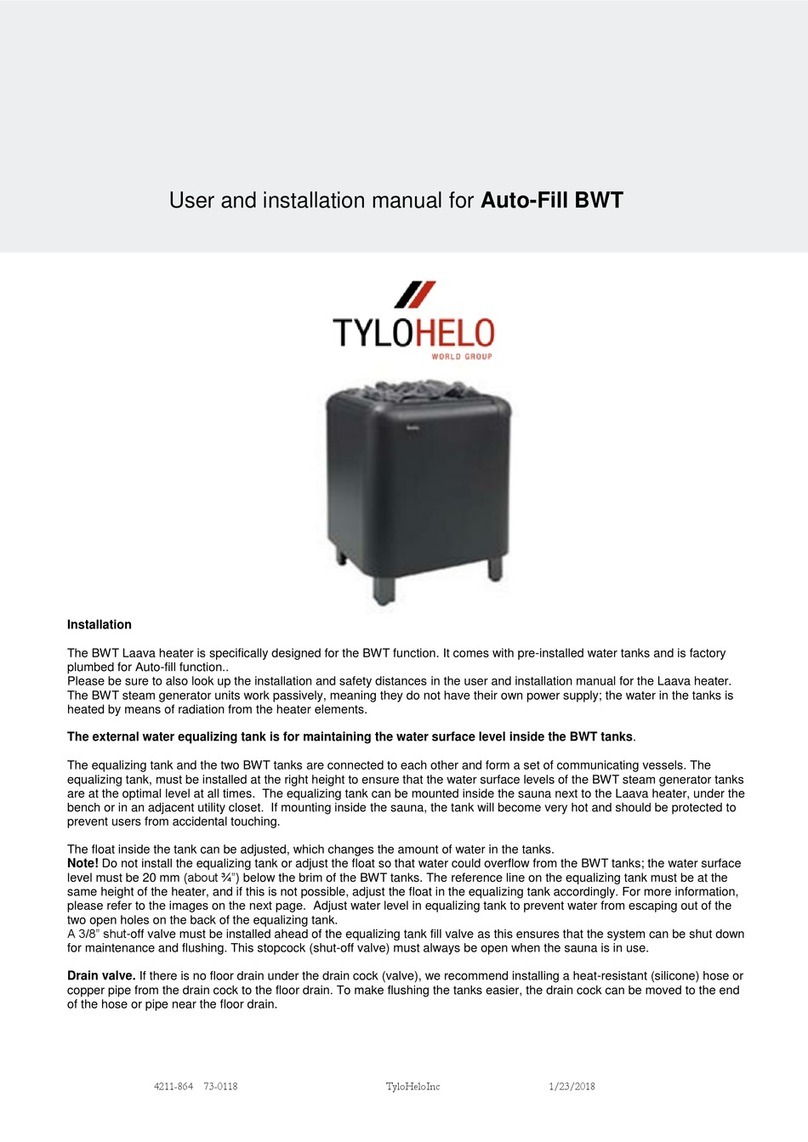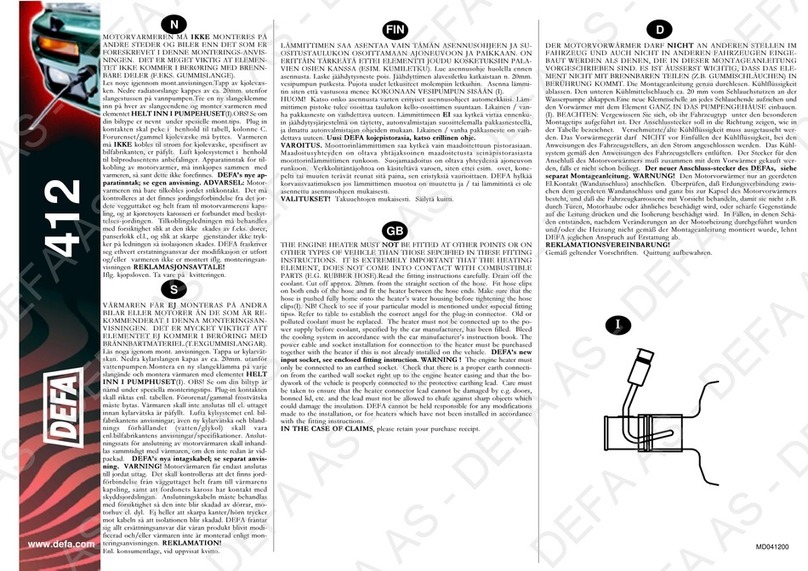
Form 43343060
-4- Jan 2014
4.0) MINIMUM CLEARANCES TO COMBUSTIBLES
Failure to do so may result in death, serious injury or
property damage.
Combustible material must be located outside the
clearance dimensions listed.
Install the warnin s card (ordered separately) and complete the blank spaces usin the clearances from
combustibles table below. See Section 25 for a printed copy of the warnin s card.
Minimum clearances to combustibles shall be measured from the outer surfaces as shown in the followin
dia ram:
End End
Ceiling
Below
Front
Rear
45° Angle (Maximum)
* Ceiling
Below
Side Side
Horizontal
MINIMUM CLEARANCES TO COMBUSTIBLES
MINIMUM CLEARANCES TO COMBUSTIBLESMINIMUM CLEARANCES TO COMBUSTIBLES
MINIMUM CLEARANCES TO COMBUSTIBLES
Model No.
Model No.Model No.
Model No.
Mounted Horizontally
Mounted HorizontallyMounted Horizontally
Mounted Horizontally
An le Mounted at
An le Mounted at An le Mounted at
An le Mounted at
45º
45º45º
45º
Sides
SidesSides
Sides
Ceilin *
Ceilin *Ceilin *
Ceilin *
Below
BelowBelow
Below
Ends
EndsEnds
Ends
45º Front
45º Front45º Front
45º Front
45º Rear
45º Rear45º Rear
45º Rear
PCS/PCA 100 28” 6” 70” ** 15” 58” 12”
PCS/PCA 125 28” 6” 76” ** 20” 66” 12”
* When used indirect vented, minimum clearance for CEILING must be: 12” for PCS/PCA 75 and 18” for
PCS/PCA 100-150. If optional corner and u-bend reflectors are not used, the clearance must be 18”.
** Maximum clearance below reduces by 50% once you are 25ft. downstream from the burner box.
▲WARNING:
▲WARNING:▲WARNING:
▲WARNING:
Certain materials or objects, when stored under the heater, will be subjected to radiant heat and
Certain materials or objects, when stored under the heater, will be subjected to radiant heat and Certain materials or objects, when stored under the heater, will be subjected to radiant heat and
Certain materials or objects, when stored under the heater, will be subjected to radiant heat and
could be seriously dama ed. Observe the Minimum Clearances to Combustibles listed in the manual and on the
could be seriously dama ed. Observe the Minimum Clearances to Combustibles listed in the manual and on the could be seriously dama ed. Observe the Minimum Clearances to Combustibles listed in the manual and on the
could be seriously dama ed. Observe the Minimum Clearances to Combustibles listed in the manual and on the
heater at all times.
heater at all times.heater at all times.
heater at all times.
NOTE:
NOTE:NOTE:
NOTE:
1.
1. 1.
1. The clear
The clearThe clear
The clearances specified above must be maintained to combustibles and other materials that may be
ances specified above must be maintained to combustibles and other materials that may be ances specified above must be maintained to combustibles and other materials that may be
ances specified above must be maintained to combustibles and other materials that may be
dama ed by temperatures 90ºF above ambient temperature. Clearances to combustibles are posted on the
dama ed by temperatures 90ºF above ambient temperature. Clearances to combustibles are posted on the dama ed by temperatures 90ºF above ambient temperature. Clearances to combustibles are posted on the
dama ed by temperatures 90ºF above ambient temperature. Clearances to combustibles are posted on the
burner
burnerburner
burner
box. In areas used for stora e of combustible materials w
box. In areas used for stora e of combustible materials wbox. In areas used for stora e of combustible materials w
box. In areas used for stora e of combustible materials where they may be stacked below the heater,
here they may be stacked below the heater, here they may be stacked below the heater,
here they may be stacked below the heater,
NFPA54 requires that the installer must post si ns that will “specify the maximum permissible stackin hei ht
NFPA54 requires that the installer must post si ns that will “specify the maximum permissible stackin hei ht NFPA54 requires that the installer must post si ns that will “specify the maximum permissible stackin hei ht
NFPA54 requires that the installer must post si ns that will “specify the maximum permissible stackin hei ht
to maintain the required clearances from the heater to combustibles.” Space
to maintain the required clearances from the heater to combustibles.” Spaceto maintain the required clearances from the heater to combustibles.” Space
to maintain the required clearances from the heater to combustibles.” Space-
--
-Ray recommends postin the
Ray recommends postin theRay recommends postin the
Ray recommends postin these
se se
se
si ns adjacent to the heater thermostat or other suitable location that will provide enhanced visibility.
si ns adjacent to the heater thermostat or other suitable location that will provide enhanced visibility.si ns adjacent to the heater thermostat or other suitable location that will provide enhanced visibility.
si ns adjacent to the heater thermostat or other suitable location that will provide enhanced visibility.
2.
2. 2.
2. The stated clearance to combustibles represents a surface temperature of 90 ºF (32 ºC) above room
The stated clearance to combustibles represents a surface temperature of 90 ºF (32 ºC) above room The stated clearance to combustibles represents a surface temperature of 90 ºF (32 ºC) above room
The stated clearance to combustibles represents a surface temperature of 90 ºF (32 ºC) above room
temperature. Buildin materials with a low hea
temperature. Buildin materials with a low heatemperature. Buildin materials with a low hea
temperature. Buildin materials with a low heat tolerance (such as plastics, vinyle sidin , canvas, tri
t tolerance (such as plastics, vinyle sidin , canvas, trit tolerance (such as plastics, vinyle sidin , canvas, tri
t tolerance (such as plastics, vinyle sidin , canvas, tri-
--
-ply, etc.)
ply, etc.) ply, etc.)
ply, etc.)
may be subject to de radation at lower temperatures. It is the installer’s responsibility to assure that adjacent
may be subject to de radation at lower temperatures. It is the installer’s responsibility to assure that adjacent may be subject to de radation at lower temperatures. It is the installer’s responsibility to assure that adjacent
may be subject to de radation at lower temperatures. It is the installer’s responsibility to assure that adjacent
materials are protected from de radation.
materials are protected from de radation.materials are protected from de radation.
materials are protected from de radation.





















